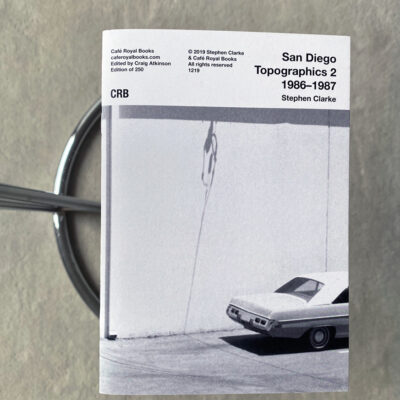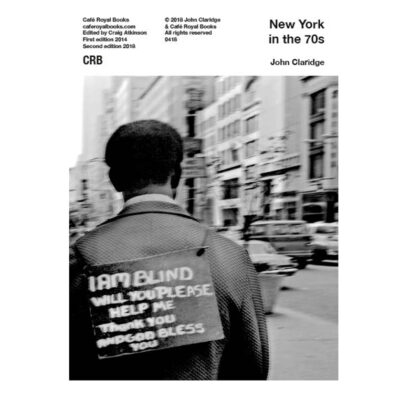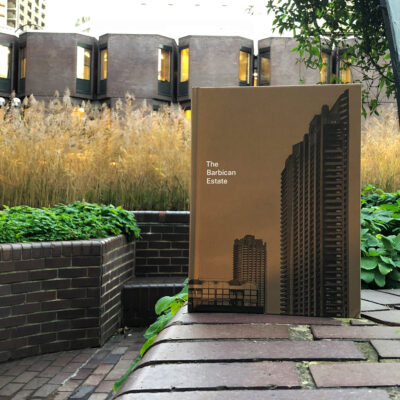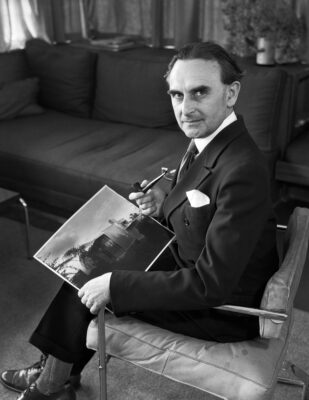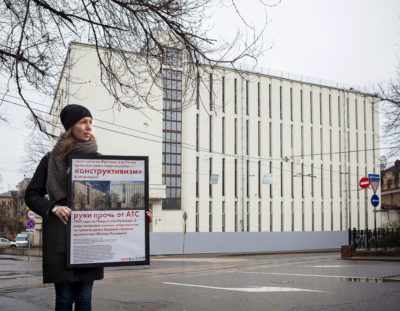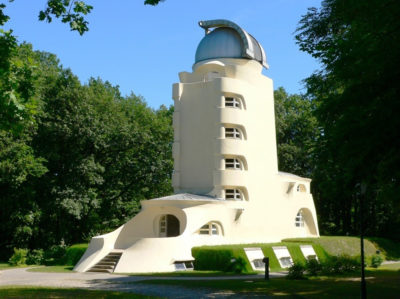Ray and Charles Eames: A Partnership Of Equals
Recent history has shown that too frequently the equally important female partners in design teams are airbrushed out of the story. (See: Lily Reich to Ludwig Mies Van Der Rohe, or Lucia to Lászlo Moholy-Nagy). However, one couple that’s unparalleled impact on design is in no small part due to their partnership of equals was Ray and Charles Eames.
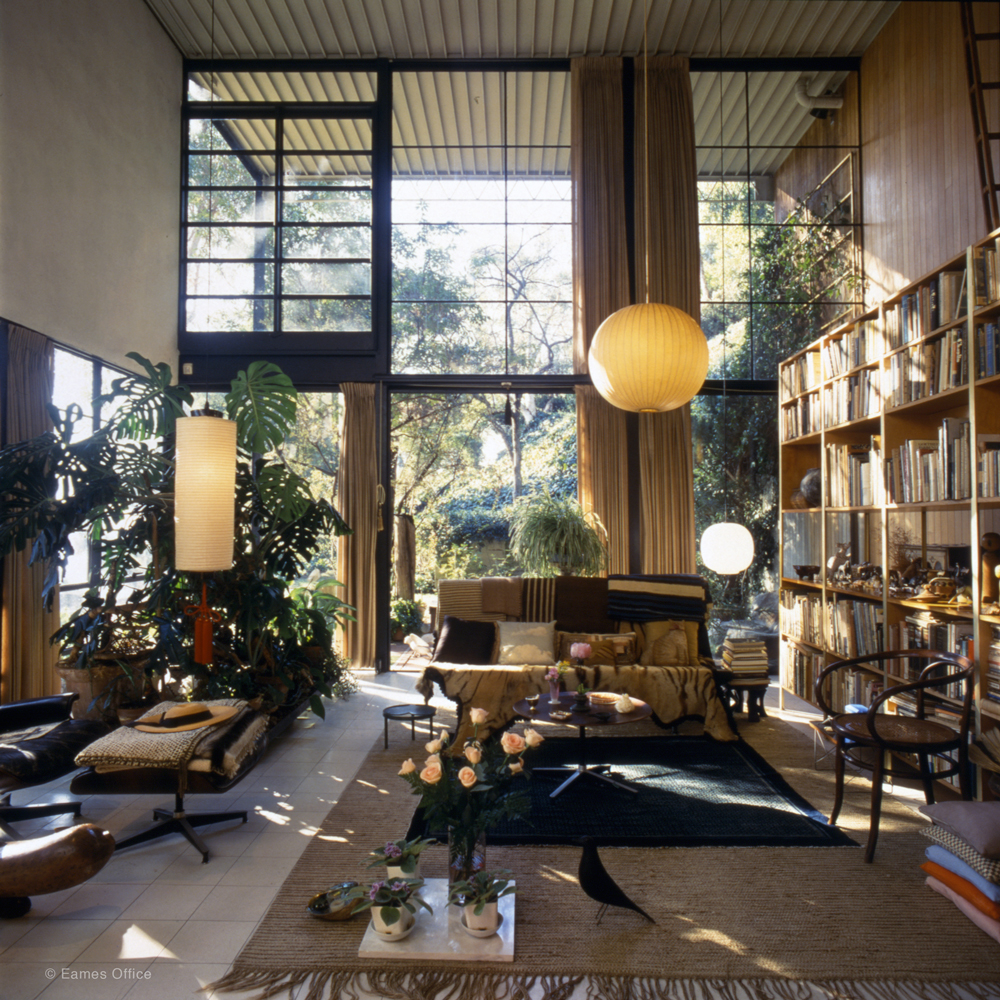
© Eames Office LLC (eamesoffice.com), photograph by Antonia Mulas.
On June the 20th the Eames Foundation will be celebrating the 70th anniversary of the Eames House and the 79th wedding anniversary of this powerhouse pair.
Their groundbreaking work introduced plywood furniture to America and created along the way, the iconic LCW chair, named by Time magazine, ‘the chair of the century’. It is every designer’s dream to create something that becomes a modern classic just like the Eames moulded chair. Notably one of the first chair designs that was light, movable and easy to mass-produce due its moulding technique, it still feels as fresh and relevant today it did in the 1950s. What the Eames dreamed over became an accessible reality to a post-war generation of homemakers.
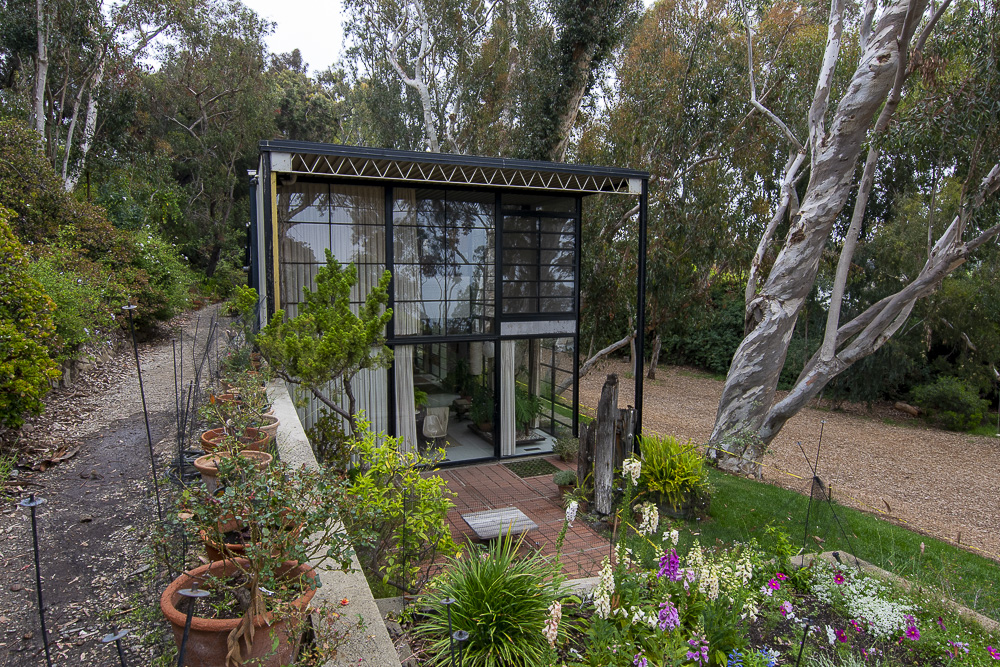
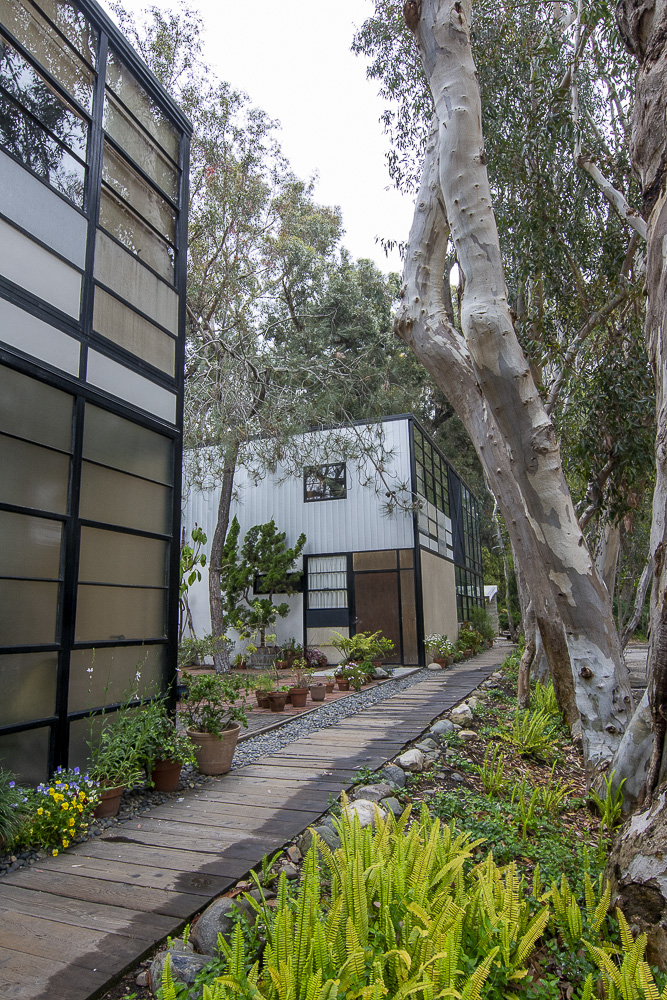
Eames House, front elevation facing east Image Howard Morris ©
Charles Eames was born in St Louis, Missouri in 1907. It was a divided city, forward-thinking as host to the World Fair and the Summer Olympics three years before his birth, but yet rigidly archaic about racial delineations for far longer; a 2014 survey showed the shadow of Jim Crow segregation still dominates parts of the city’s urban planning. Since the Civil War its racially discriminatory laws had remained in place and in 1916, when Charles was nine years old ‘residential segregation ordinance’ was put in place, which controlled who lived in particular neighbourhoods.
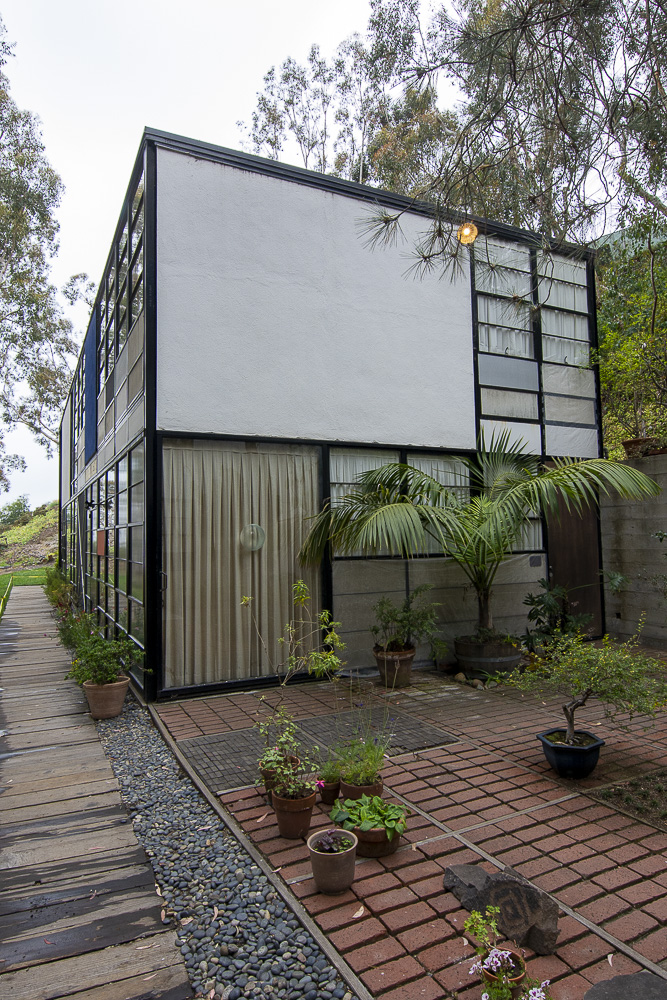
From the central terrace area the western wing of the Eames House Image Howard Morris ©
A scholarship student at the city’s Washington University, Eames left before his third year because of a much-repeated idea that advocating for Frank Lloyd Wright could send you packing. He initially joined the firm of architects Trueblood and Graf, by 1930 he was married with a child, Lucia.
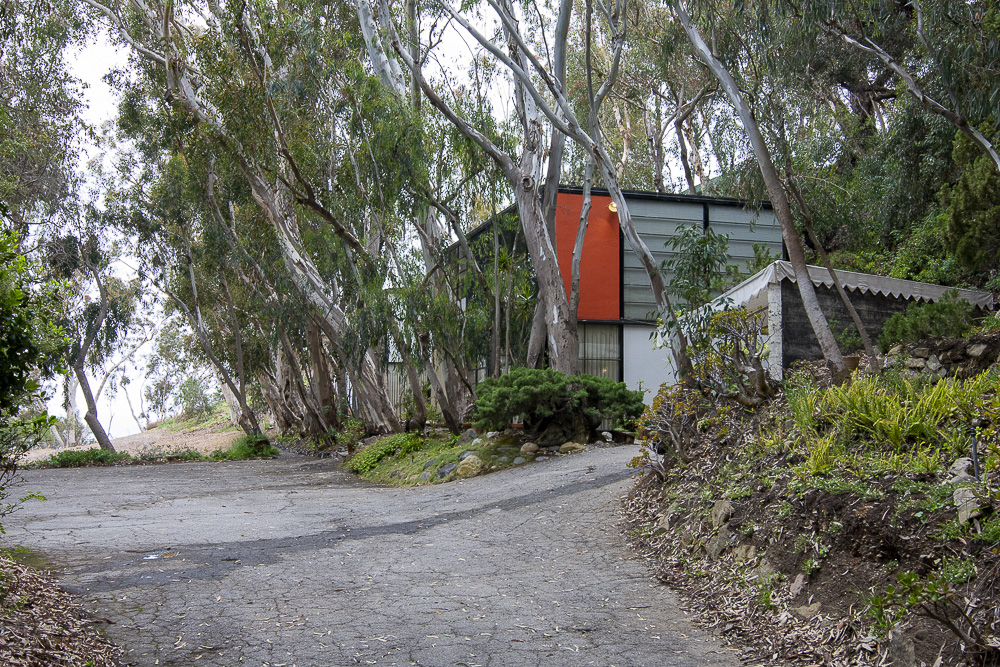
A first sight of the Eames House Image Howard Morris ©
Setting up his own practice, one collaboration changes the course of his life. Together with Robert Walsh, a partner in his practice, and architect Eliel Saarinen, they design the Meyer House. This led in 1938 to Eliel offering him an opportunity to leave St Louis to accept a fellowship at Cranbrook Academy of Art.
The school was recognized as the ‘incubator of Mid-Century Modernism’ and was founded as an ‘experimental artists’ colony.’ Eliel Saarinen, its first President designed the campus and first curriculum. This was where Eames and Eliel’s son Eero met and marked the beginning of their long friendship.
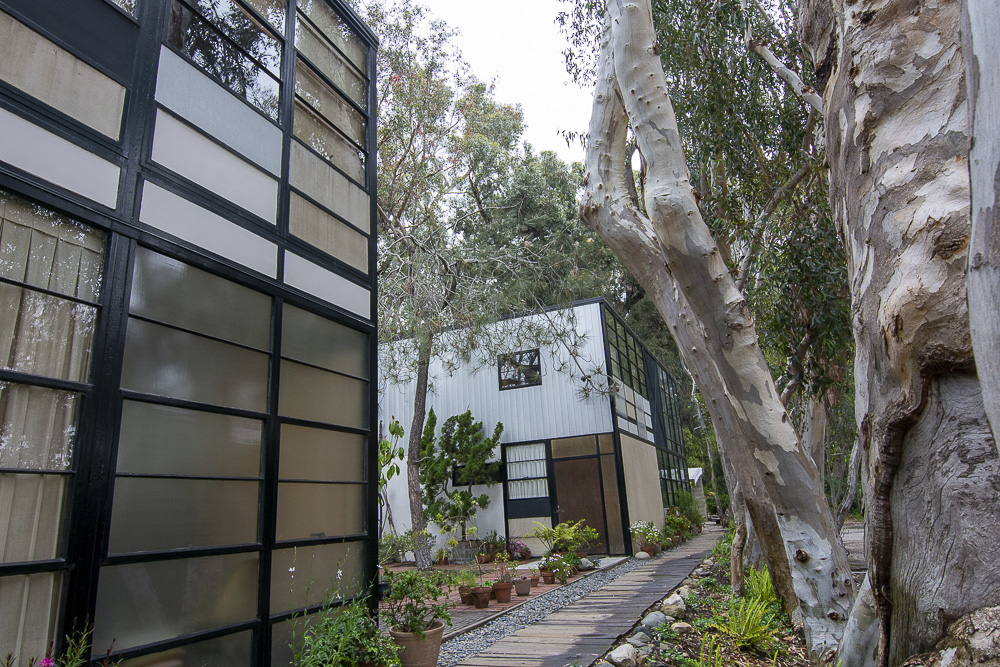
Eames House, front elevation Image Howard Morris ©
The root Ray Eames (née Kaiser) took to get to Cranbrook was quite different. In 1933, aged 21, she moved to New York to study under the highly respected artist and teacher Hans Hofmann. Here she met artist Lee Krassner (the subject of a highly acclaimed 2019 Barbican exhibition), later wife of Jackson Pollack. Together they were members of the AAA group, American Abstract Artists – Ray had been a founder member alongside Josef Albers, Willem de Kooning and other stellar artists.
Ray briefly returned home to California in 1939 and then onward to Michigan to study at Cranbrook. By now Charles was Head of the Design Department.
The couple first worked together on the MoMA Organic Furniture Competition along with Eero Saarinen. Charles fresh from a divorce, married Ray in 1940. A year later America was at war.
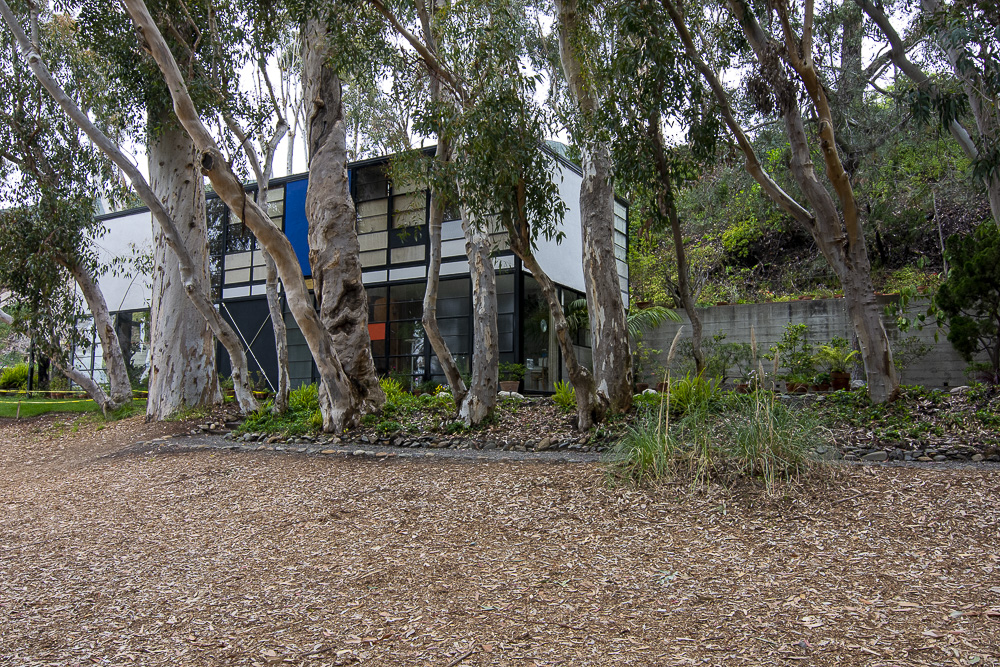
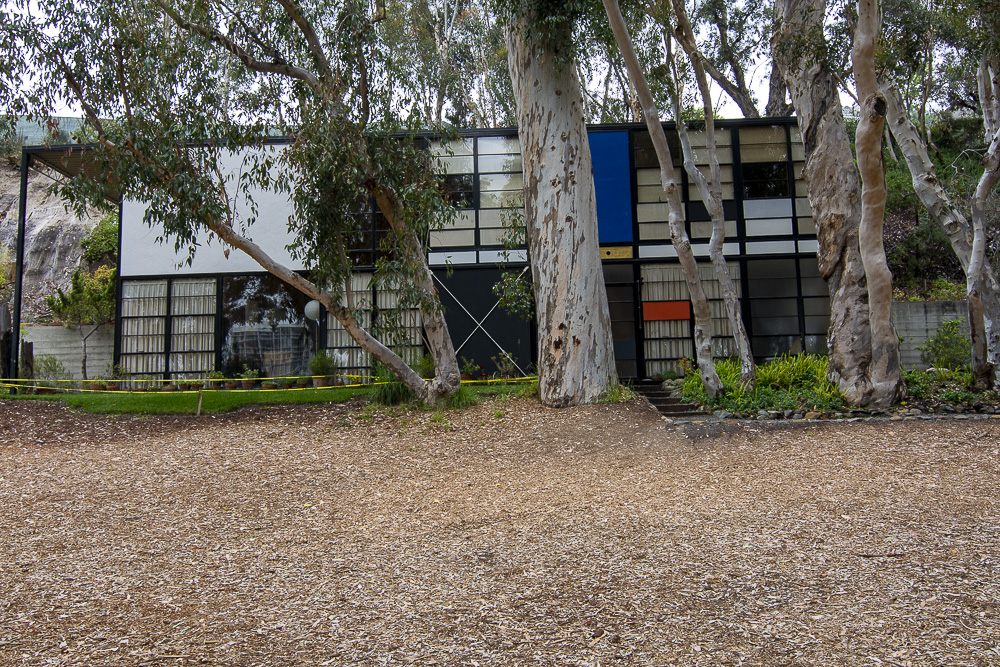
Front elevation of the Eames House Image Howard Morris ©
The Eames are famous for experimenting with plywood, fusing together layers of Douglas Fir veneer, which was then moulded to allow it to curve as well as sculptural 3-D shapes. Whilst using the plywood for the war effort could not have been on their mind originally, what was clear was that it had another life and limb saving purpose. The US Navy commissioned the Eames. It’s hard to imagine that the duo could have foreseen that their designs would be suitable for military production. The flexible mouldable wood was to be used to create leg and arm splints, stretchers and ‘experimental glider shells’, to support and transport injured soldiers and sailors.
They operated out of a space in Venice, California. This was very different from the Cranbrook incubator, accepting the commission was stressful as there were delays between payment by the Navy regardless that they were paying out for materials and labour. The only possible solution was to sell their services to a local business, Evans Products. Ray and Charles and their team (with Gregory Ain as Chief Engineer) became the Molded Plywood Products Division of Evans Products Company.
What this did mean was that when the war ended, they had a real sense of scaling up and could fully turn their attention to creating furniture. A baby-boomer American audience was hungry for a new mode of post-war living. Their combined design skills and vision came together with Ray also creating advertising campaigns which today is seen as quintessential American advertising.
They handed over production to Herman Miller company who holds the US licenses to this day. In Europe, Vitra are the license holders.
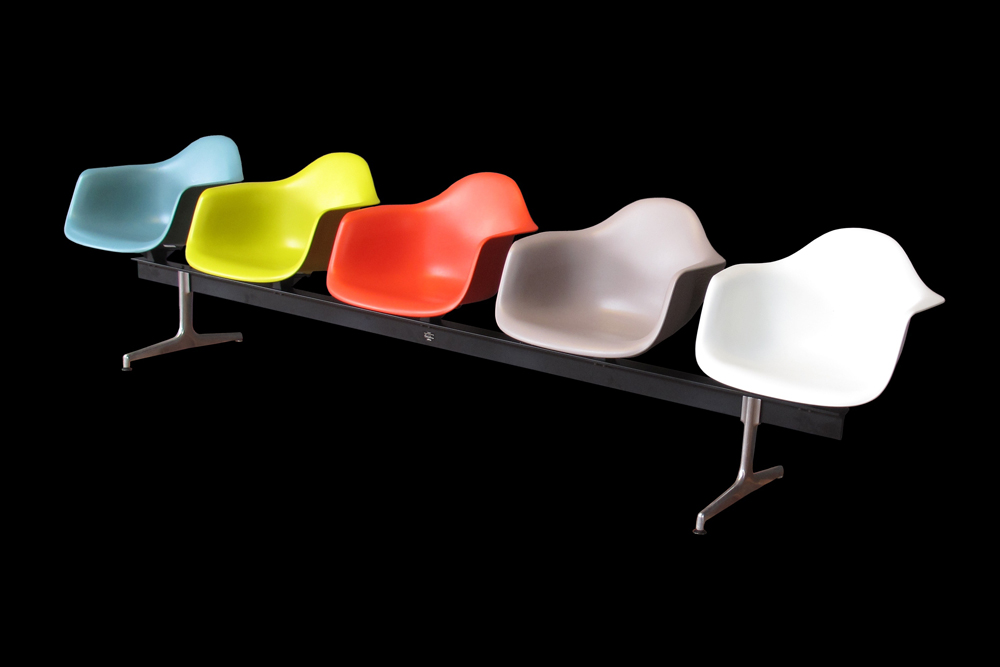
Eames moulded plastic chairs Image Rama CC BY SA 2.0.fr
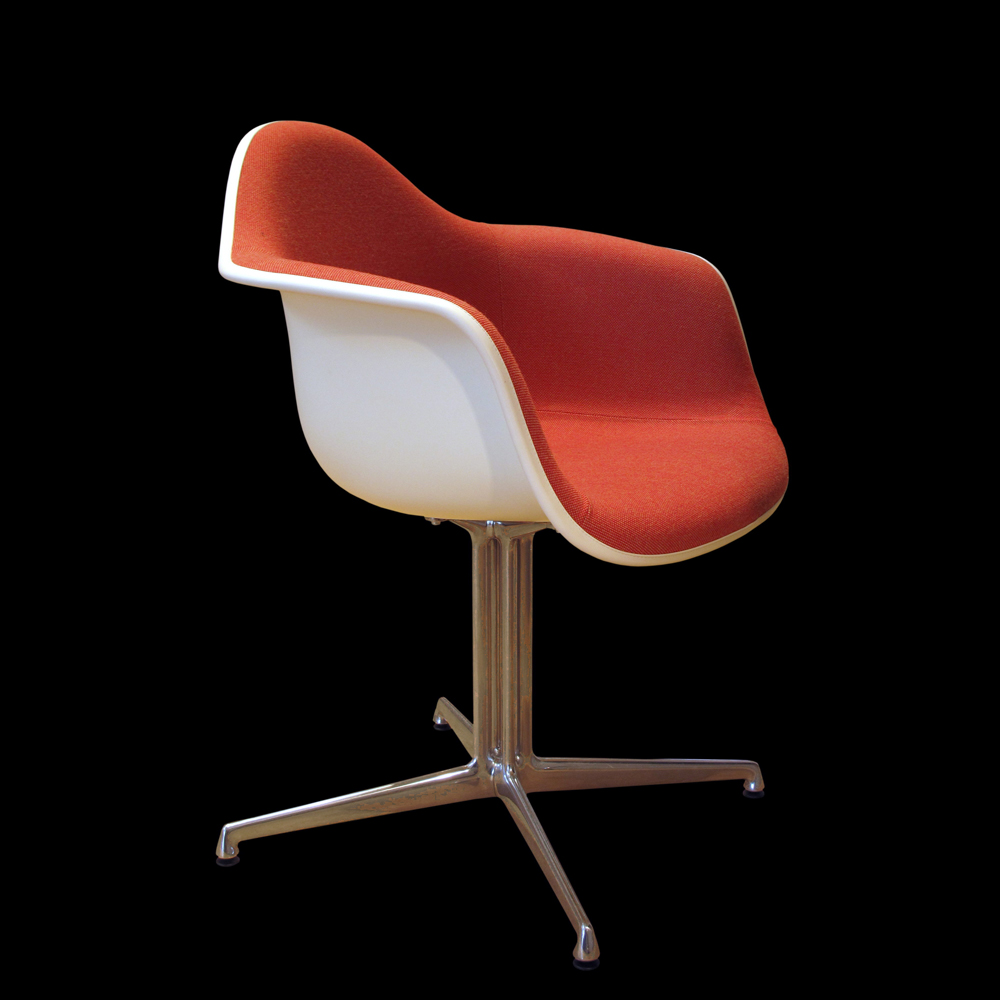
Eames moulded plastic chairs Image Rama CC BY SA 2.0.fr
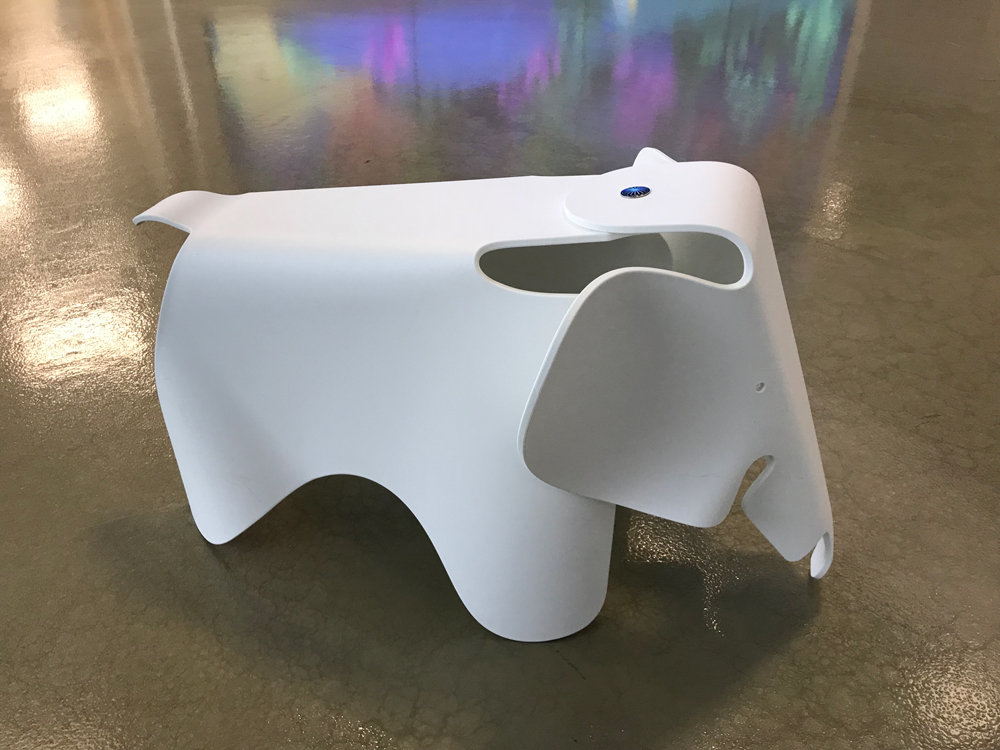
Eames Elephant CC BY SA 4.0 Image SInekka Halme
Prolific is the word that springs to mind, the Eames designed everything including toys, such as the 1945 Eames elephant. It remains in production today produced by Vitra in moulded plastic or wood for Vitra.
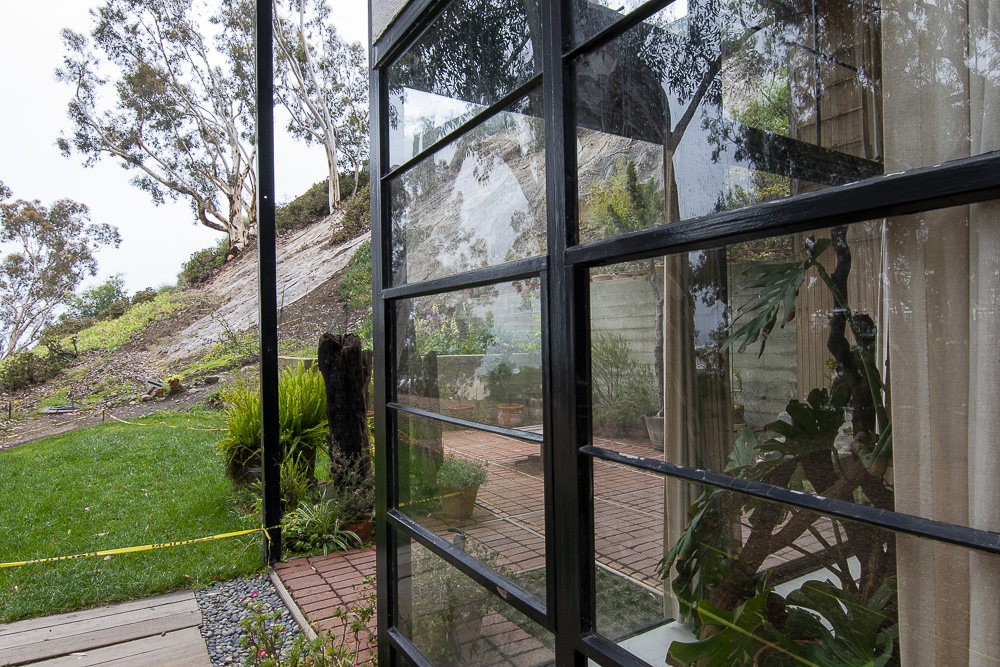
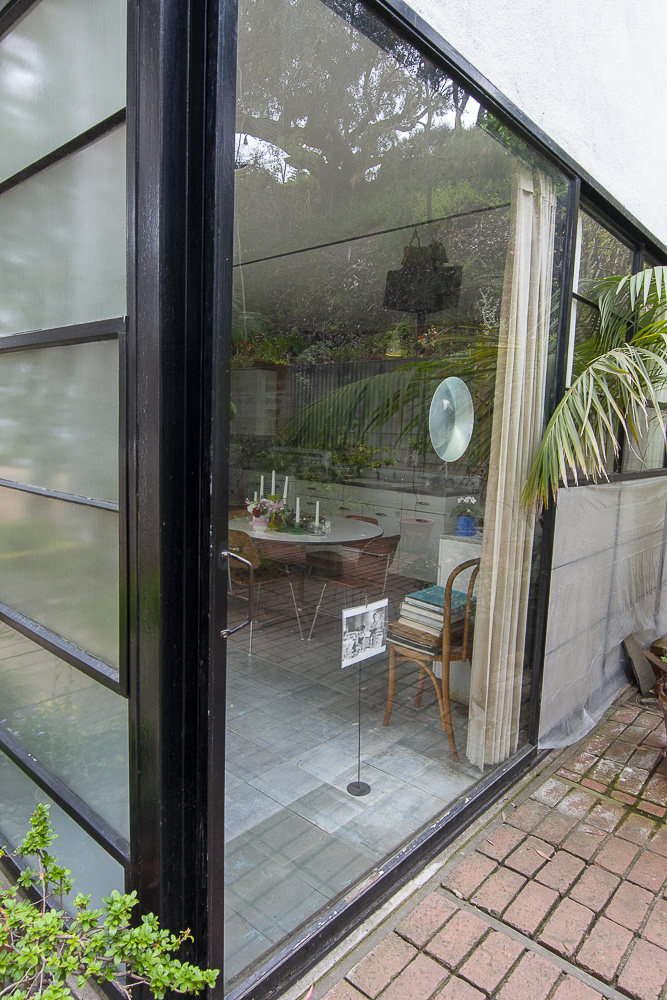
Large window to the Eames House Image Howard Morris ©
The Eames lived design and they were a natural choice for Arts and Architecture magazine’s Case Study project. Their house in Pacific Palisades is ‘Case Study House No. 8’. The project intended to introduce Americans to attainable homes using accessible materials. The magazine’s editor, John Entenza was a close friend of Ray and Charles during and after the process and Charles was a board member of the magazine.
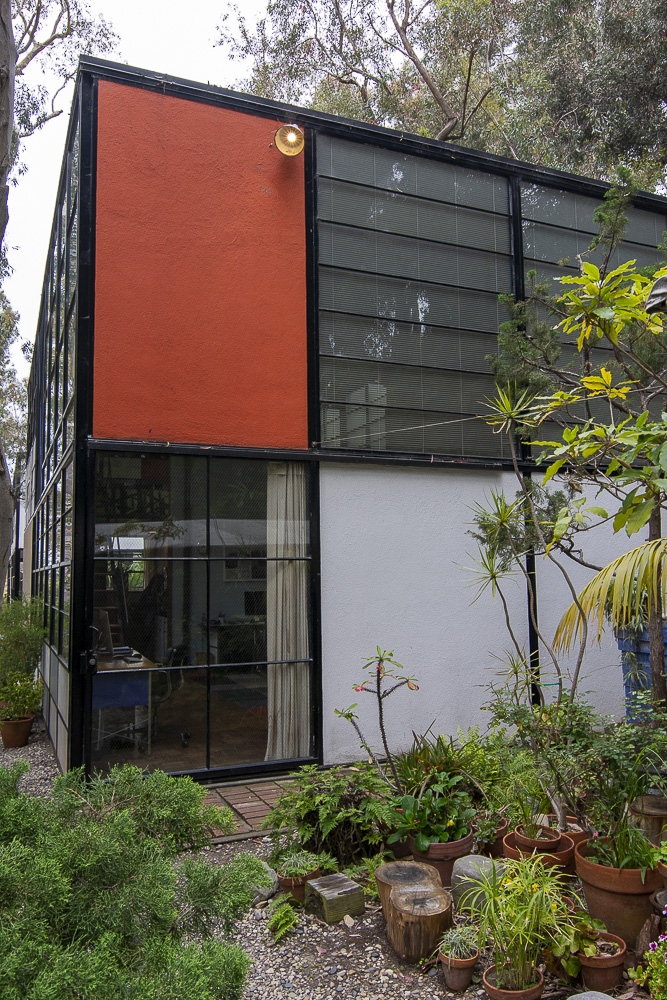
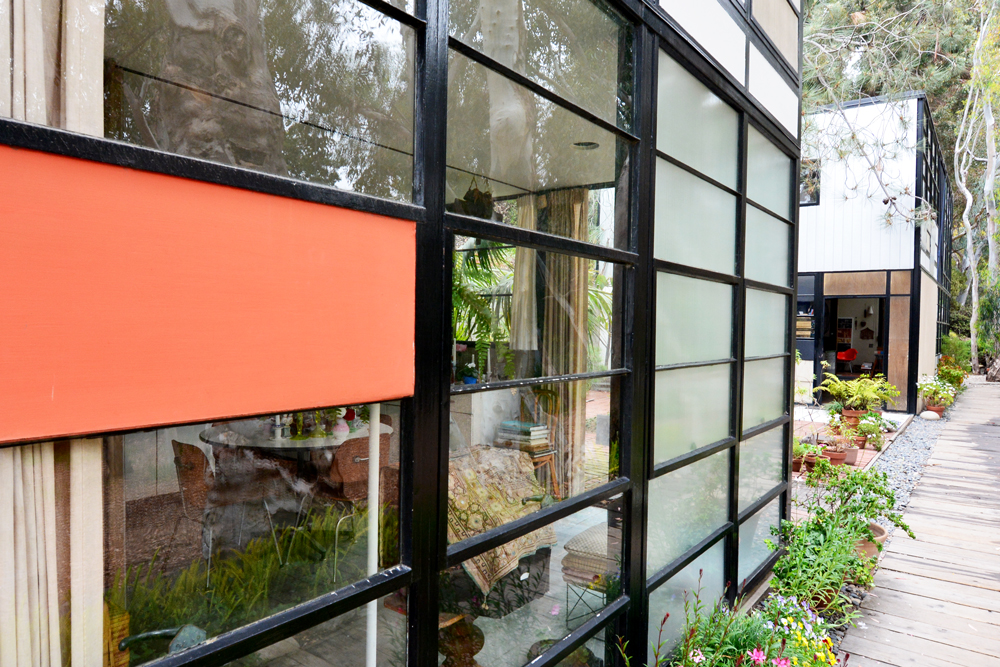
Windows of the Eames House Image Howard Morris ©
The original design for the Eames Case Study House had the project name, The Bridge House – designed by Ray, Charles and Eero Saarinen. However whilst they were waiting for building materials to arrive they frequently used the meadow which ran down from the front of the proposed house, with a perfect view of the ocean, as a social space. It is ‘nestled in a magical setting overlooking the Pacific ocean and sided by an expansive meadow surrounded by trees.’ From that came the seeds of an idea for the house we know today, a new design The Eames House which is actually two separate buildings. A post-war shortage of materials meant that the home which actually only took three months to erect was not completed until 1949.
‘The Eames House is not just a perfect way to experience Charles and Ray’s mindset, it is also held up as an important Mid-Century American Modernist home’.
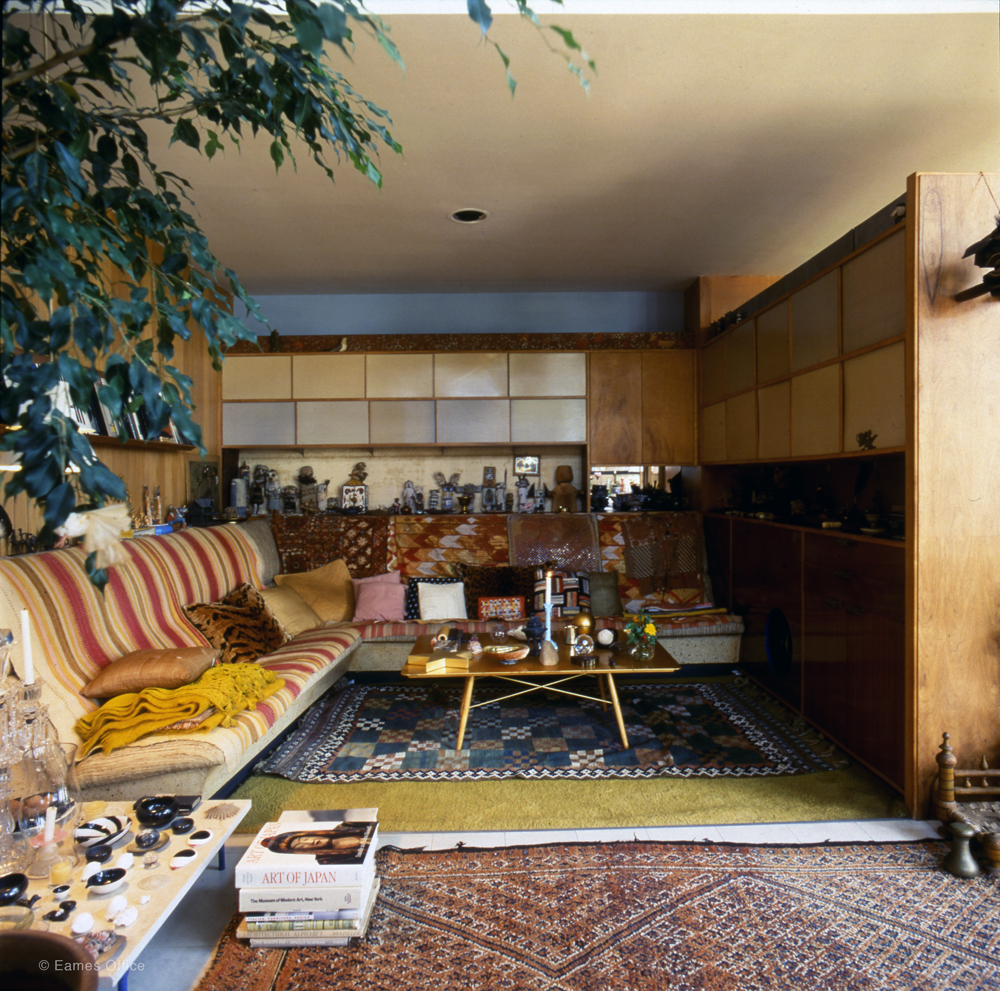
© Eames Office LLC (eamesoffice.com), photograph by Antonia Mulas.
Today the Case House No 8 is home to the Eames Office and Foundation and is;
‘a living laboratory of the Eameses’ ideas and creativity, illuminating their approaches to life and work in a multi-layered, visceral manner.
Design classics from Eames:
The 1956 Eames Lounge Chair and the 1950 DWS Chair and the 1956 Eames Lounge Chair
Eames Lounge (670) and Ottoman (671)
70th Anniversary events: A virtual celebration going live on June 20th 2020
Visit the house, by appointment: Eames Foundation
203 Chautauqua Boulevard
Pacific Palisades, CA 90272
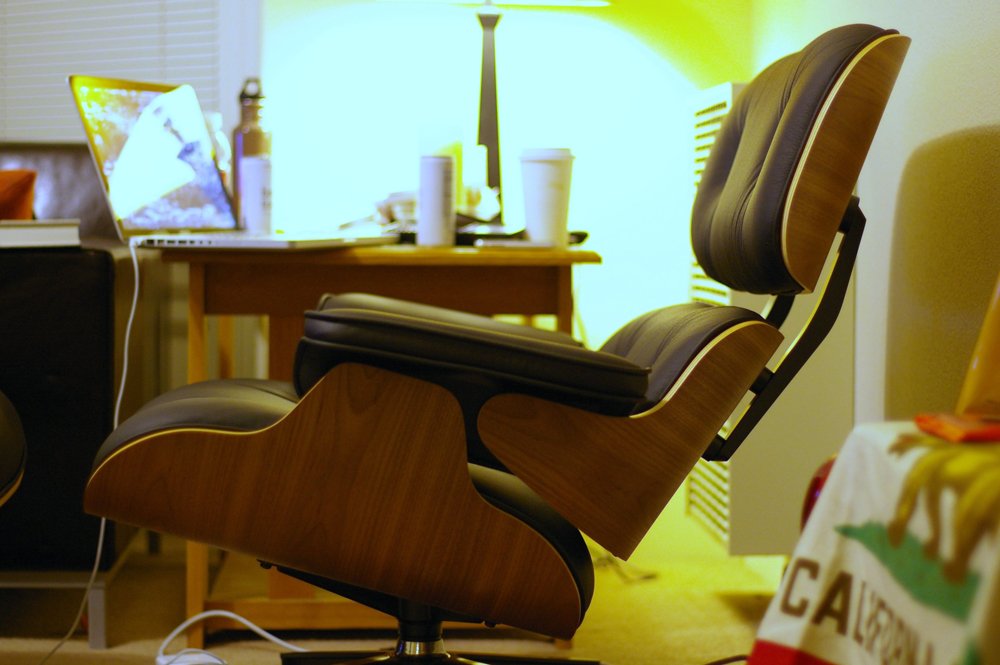
Eames Lounge Chair Image Blunt CC BY SA 2.0




